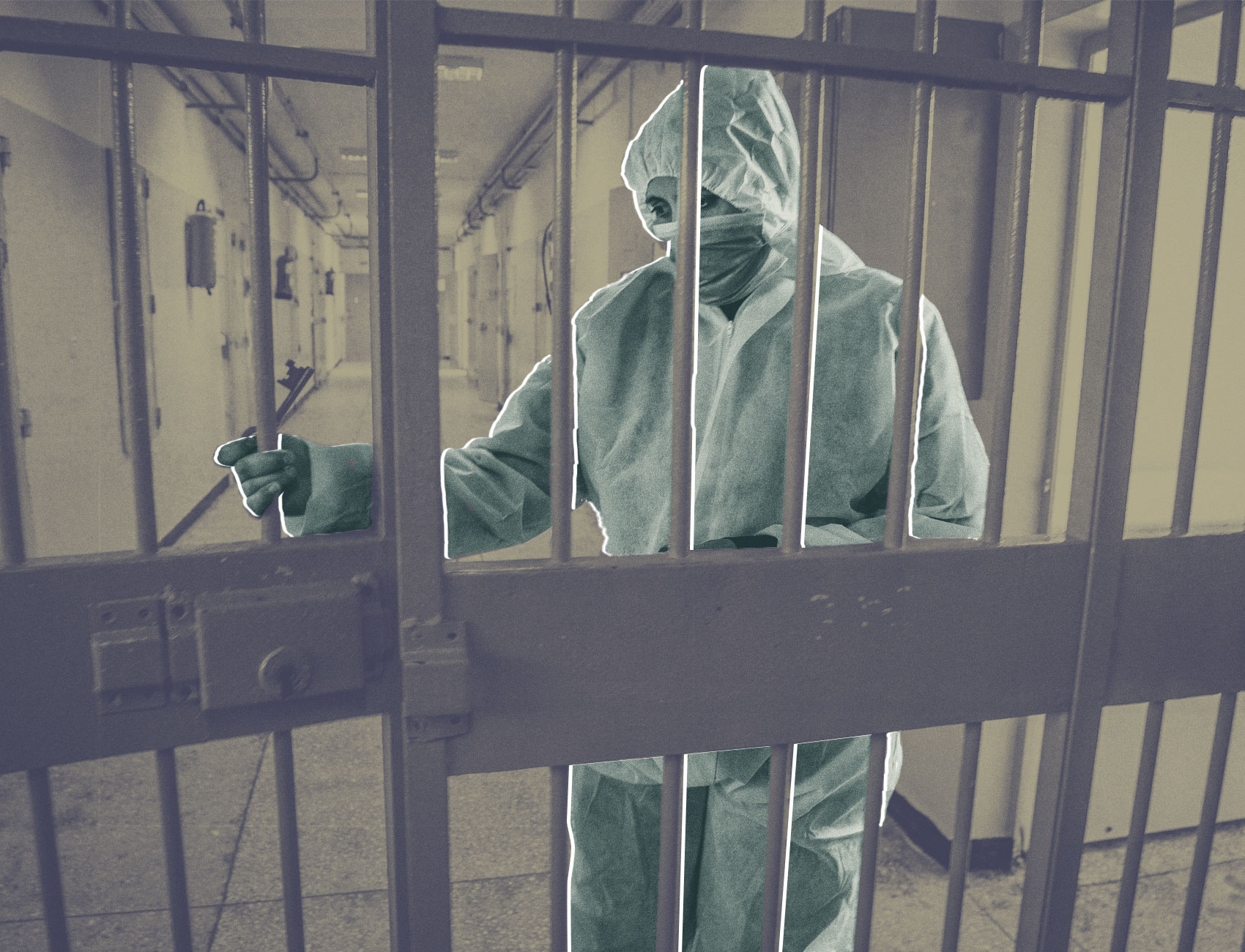Researchers Estimate Mass Incarceration Contributed To More Than Half A Million Additional Cases Of COVID-19 Over The Summer
The report found that spread inside correctional facilities contributed to community spread, particularly in California, Florida and Texas.

Between May 1 and August 1, mass incarceration contributed to more than half a million cases of COVID-19 across the country, the bulk of them outside of correctional institutions themselves, a new report from the Prison Policy Initiative estimates.
“Prisons are ongoing super spreader events that are not hermetically sealed from society,” said the report’s coauthor Gregory Hooks, professor of sociology at McMaster University.
Since the start of the pandemic, nearly 250,000 people incarcerated in state prisons tested positive for COVID-19, according to an investigation by The Marshall Project and the Associated Press. Staff can bring the virus into prisons and jails, and carry it to the outside community.
The researchers estimated a typical county could expect about 800 new COVID-19 cases per 100,000 residents during the three month period. They found that counties with higher rates of mass incarceration saw large numbers of additional cases over this baseline. This was also true when they examined multicounty areas that are economically connected—for instance, areas where many people live in one county and commute to another.
“Mass incarceration impacted COVID-19 caseloads in multicounty economic areas and states,” the authors wrote. “Nationally, this impact reached a tragic scale: mass incarceration contributed to more than a half million cases over the summer of 2020.”
During this time period, the report estimates that spread inside correctional facilities contributed to more than 100,000 additional cases of COVID-19 in California alone—more than any other state in the country. Since the start of the pandemic, just over 30,000 prisoners and about 8,800 staff in California prisons have been confirmed to have COVID-19, according to the California Department of Corrections and Rehabilitation. Ten staff and 101 prisoners have died from what appear to be complications from the virus, according to the department.
“How many additional cases do you get from being in an economic area in which people are incarcerated?” Hooks said. “It turns out you get quite a few.”
The report estimates that mass incarceration contributed to more than 90,000 additional cases in Florida; over 50,000 in Texas and Illinois; and almost 40,000 in New York. Seven states were estimated to have more than 200 additional cases per 100,000 residents: California, Florida, Georgia, Illinois, Louisiana, Maryland, and New Jersey.
In metropolitan economic areas with less mass incarceration—0.74 incarcerated persons per square mile—there were roughly 60 additional cases per 100,000 residents, according to the report. In the most densely incarcerated areas, this number more than tripled to over 200 additional cases. The hardest hit metropolitan areas were found in Los Angeles/Long Beach/Riverside, California; New York City/Newark, New Jersey/Bridgeport, Conn., and Chicago/Naperville, Indiana/Michigan City, Wisconsin.
The report’s findings reflect the crisis created by two American policy failures—mass incarceration and an abhorrent response to the pandemic, Hooks said.
“This was a synergistic policy failure,” he said. “There’s a synergy between the policy failure in criminal justice and the policy failure in this pandemic.”
Since the pandemic began, prisoners, their families, and attorneys have petitioned courts, legislatures, and governors to release incarcerated people. In March, they warned that the virus would spread rapidly in prisons and jails to both prisoners and staff. But their prescient warnings have been largely ignored.
Elected officials can still act to save lives during the current surge, which is only expected to worsen during the coming winter months, said Hooks. States can decrease the number of people incarcerated through an increased use of clemency and expanding parole, he said.
“We have too many people held in unsafe places,” said Hooks. “It’s not too late to do some good on this thing.”
In New York, for example, Gov. Andrew Cuomo has refused to use his clemency powers to release thousands of elderly and/or medically vulnerable state prisoners, as well as those held on technical parole violations.
In fact, Cuomo has contributed to an increase in the state’s jail populations. In the spring, Cuomo and state legislators rolled back the state’s bail reform law, adding more misdemeanor and felony charges that would be eligible for cash bail. According to a report by the Center for Court Innovation, “from July through November 1, the effect of those amendments alone has resulted in a 7 to 11 percent increase in the pretrial jail population.”
“Governor Cuomo continues to ignore the plight of incarcerated, vulnerable New Yorkers as COVID-19 rages through his state prisons,” said Katie Schaffer, Director of Organizing and Advocacy at the Center for Community Alternatives, in a statement on Dec. 14, the same day the first person in New York received the COVID-19 vaccine.
“The Governor must act now to save lives behind bars by granting clemency to older and immunocompromised people and ensuring that all vulnerable New Yorkers, including incarcerated people, be prioritized for early, voluntary access to authorized vaccines,” she said.
